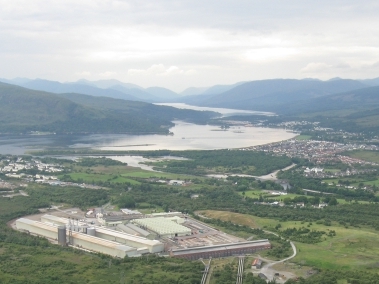The Battle of Inverlochy (1431): A Pivotal Clash in Scottish History
by Marcus Harris on Jul 17, 2024
Table of Content
Introduction
The Battle of Inverlochy, fought in 1431, stands as a critical event in Scottish history, particularly during the reign of King James I. This confrontation near Inverlochy Castle in the Scottish Highlands was not just a clash of arms but also a clash of political ambitions and cultural values.
Historical Context of The Battle of Inverlochy
Key Figures and Political Landscape
The principal leader of the royalist forces was likely Alexander of Islay, Earl of Ross, who was also the Lord of the Isles and a pivotal figure in Scottish politics. His allegiance to King James I, however, was complex and fraught with fluctuating loyalties typical of the period.
Donald Balloch, leading the opposing forces, was a cousin to Alexander and represented a faction within the Clan Donald resistant to royal control. His leadership in the battle was crucial and symbolized the broader resistance of the Highland clans against the centralizing policies of the Scottish crown.
Political and Social Situation

Combatants
Side A Forces: Clan Donald
- Composition: The Clan Donald warriors were primarily Highland infantry, armed with claymores and axes, and known for their swift and agile combat tactics.
- Objective: To assert clan autonomy and resist the imposition of laws and taxes by the central government.
Side B Forces: Royalists
- Leadership: The royalist forces were likely led by Alexander of Islay, though his commitment might have been tepid given his familial ties with Donald Balloch.
- Composition: The royalist army mainly consisted of lowland troops, including heavily armored knights and foot soldiers equipped with longbows and spears.
- Objective: To enforce King James I’s authority in the Highlands and suppress any rebellion.
Battle Progression
Preparation and Strategy
Main Events and Tactics
The battle took place on a frosty morning near Inverlochy Castle. The Highlanders, using the element of surprise and their intimate knowledge of the local terrain, launched a sudden and fierce attack on the royalist camp. The royalists, caught off guard and struggling in unfamiliar terrain, were unable to organize into effective combat formations.
Outcome and Casualties

Consequences and Effects
Immediate Aftermath
Long-term Impact
Legacy and Historical Significance
The Battle of Inverlochy is remembered not only for its military significance but also as a symbol of the enduring struggle for autonomy within the Scottish Highlands. It remains a poignant example of the complexities of Scottish feudal loyalties and the fierce independence of the Highland clans.
Conclusion
Clan heritage in your hands!
Frequently Asked Questions
What was the Battle of Inverlochy?
The Battle of Inverlochy, fought in 1431, was a significant conflict in Scottish history where Clan Donald, led by Donald Balloch, defeated a royalist force near Inverlochy Castle. This battle was part of the wider struggle between the centralized authority of the Scottish crown and the autonomy of the Highland clans.
Who were the main combatants in the Battle of Inverlochy?
The main combatants were Donald Balloch of Clan Donald and the royalist forces likely led by Alexander of Islay, Earl of Ross, and Lord of the Isles. Donald Balloch represented the Highland clans' resistance against the Scottish crown, while the royalists aimed to enforce King James I’s authority over the Highlands.
What were the outcomes and consequences of the Battle of Inverlochy?
The Battle of Inverlochy ended in a decisive victory for Clan Donald. The immediate outcome was a significant weakening of royal authority in the Highlands, encouraging further rebellions. In the long term, it demonstrated the effectiveness of guerrilla tactics and delayed the centralization efforts of the Scottish monarchy.
Why is the Battle of Inverlochy historically significant?
The Battle of Inverlochy is historically significant as it highlights the complications in Scottish feudal politics and the strong sense of independence held by the Highland clans. It also serves as a testament to the challenges faced by Scottish monarchs in consolidating power across a region characterized by rough terrain and strong local loyalties.
How did the Battle of Inverlochy affect Scottish history?
The battle had lasting impacts on Scottish history, reinforcing the clan system and the cultural identity of the Highlands. Politically, it delayed the centralization of power and governance in Scotland, influencing the approach of subsequent monarchs towards the governance of the Highlands and their strategies in dealing with local leaders and clans.






